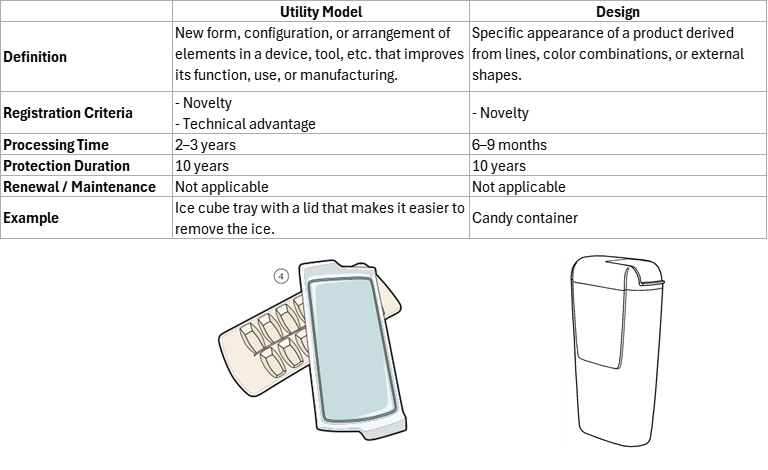The Peruvian Patent Office (Directorate of Inventions and New Technologies – INDECOPI) includes three types of protection depending on the invention: Invention Patents, Utility Model Patents, and Designs. These differ in the type of creation, method of evaluation, and duration of protection.
Difference Between Invention Patent and Utility Model
Invention Patents protect products and processes that meet the inventive step requirement, meaning they solve a technical problem that had not been resolved before. Utility Model Patents only protect a new shape introduced to an object that provides a new function or technical advantage over previous creations. Utility Models do not require an inventive step analysis like invention patents; it is enough to show that the new form granted to the claimed product confers a technical advantage over what is already known in the prior art.
Utility Models
Utility Models are intended to protect any new form, configuration, or arrangement of elements in any device, tool, instrument, mechanism, or other object—or part thereof—that allows better or different functioning, use, or manufacture of the object, or provides some utility, advantage, or technical effect not previously present (Decision 486 – Art. 81).
Only product claims can be protected in this category, with novelty and technical advantage being the key criteria.
Designs
Designs protect the particular appearance of a product that results from any combination of lines or colors, or from any two-dimensional or three-dimensional external shape, contour, configuration, texture, or material, without changing the product’s purpose (Decision 486 – Art. 113).
Designs must primarily meet the novelty criterion. The Peruvian Patent Office does not conduct a novelty examination ex officio, unless the design clearly lacks novelty or if an opposition is filed during the registration process (Article 124 of Decision 486).
Key Characteristics: Utility Models vs. Designs




